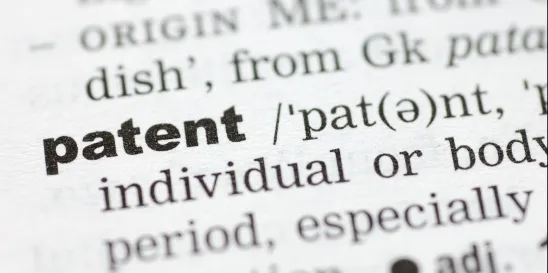In Purdue Pharma L.P. v. Collegium Pharmaceutical, Inc. 2022-1482 (Fed. Cir. Nov. 21, 2023), the case addresses the Patent Trial and Appeal Board’s (“PTAB’s”) authority to issue a Final Written Decision in a post grant review (“PGR”) after the prescribed statutory deadline.
Background
In September 2017, Purdue Pharma L.P. (“Purdue”) sued Collegium Pharmaceutical, Inc. (“Collegium”) for infringement of US Pat. No. 9,693,961 (“the ‘961 patent”).
In March 2018, Collegium petitioned the PTAB for PGR of claims 1-17 of the ‘961 patent. Based on a finding that the challenged claims lacked sufficient written description, the PTAB instituted PGR in October 2018. Under 35 U.S.C. § 326(a)(11) and 37 C.F.R. § 42.200(c), the PTAB had one year to issue a Final Written Decision, subject to a six month extension for “good cause.” The one year deadline fell on October 4, 2019.
In September 2019, Purdue filed a Notice of Bankruptcy Filing and Imposition of Automatic Stay. The PTAB subsequently stayed the PGR.
Two days before the one year deadline for the PTAB’s Final Written Decision in the PGR, the Chief Administrative Patent Judge found good cause to grant a six month extension so the bankruptcy court could assess whether the automatic stay applied to PGRs. Neither party sought guidance from the bankruptcy court nor asked the bankruptcy court to lift the stay during the six-month extension period.
On April 4, 2020, the extended deadline for the PTAB’s Final Written Decision in the PGR passed.
On September 1, 2020, the bankruptcy court lifted the automatic stay of the PGR.
On September 11, 2020, Purdue filed a motion to terminate the PGR, arguing the PTAB no longer had the authority to issue a Final Written Decision as the statutorily prescribed 18-month deadline had passed.
On November 19, 2021 (approximately 19 months after the statutory deadline as extended), the PTAB denied Purdue’s motion and issued its Final Written Decision, finding the challenged claims unpatentable for lack of written description and as anticipated by the prior art.
Purdue appealed the PTAB’s Final Written Decision to the Federal Circuit.
Issue
Did the PTAB have authority to issue a Final Written Decision in the PGR after the prescribed statutory deadline?
Holding
The PTAB had authority to issue a Final Written Decision in the PGR after the prescribed statutory deadline because 35 U.S.C. § 326(a)(11) (i.e., the applicable statutory deadline provision) does not specify any consequences for missing the deadline and Supreme Court precedent dictates that “if a statute does not specify a consequence for non-compliance with statutory timing provisions, the federal courts will not in the ordinary course impose their own coercive sanction.” United States v. James Daniel Good Real Prop., 510 U.S. 43, 63 (1993).
Reasoning (focused on the precedential issue of whether the PTAB has authority to issue a Final Written Decision in a PGR after the prescribed statutory deadline)
The Federal Circuit noted that this PGR presented the first instance where the PTAB failed to meet the deadline prescribed in 35 U.S.C. § 326(a)(11) – rendering this a matter of first impression.
The Federal Circuit first determined that 35 U.S.C. § 326(a)(11) does not specify any consequences for missing the deadline.
In United States v. James Daniel Good Real Prop., the Supreme Court held that “if a statute does not specify a consequence for non-compliance with statutory timing provisions, the federal courts will not in the ordinary course impose their own coercive sanction.” 510 U.S. 43, 63 (1993). Applying this rule in Liesegang v. Sec’y of Veterans Affs, the Federal Circuit later held that “even in the face of a statutory timing directive, when a statute does not specify the consequences of non-compliance, courts should not assume that Congress intended that the agency lose its power to act.” 312 F.3d 1368, 1376–77 (Fed. Cir. 2002)).
Following the above precedent in this case, the Federal Circuit determined “the [PTAB] has authority to issue a Final Written Decision even after the deadline proscribed in the statute has passed absent any contrary indication in the language, structure, or legislative history of the statute.”
Regarding the statute’s language and structure, the Federal Circuit determined:
- consistent with the Supreme Court’s decision in Brock v. Pierce Cnty., 476 U.S. 253, 266 (1986), the use of “shall” and “requirement” in 35 U.S.C. § 326(a)(11) (i.e., “Director shall prescribe regulations– . . . requiring that the final determination in any post-grant review be issued not later than 1 year”) does not deprive the PTAB of authority to issue a Final Written Decision after the deadline;
- consistent with Liesegang the negative words of “not later than 1 year” and “by not more than 6 months” in 35 U.S.C. § 326(a)(11) “are at best precatory rather than mandatory” – and thus such language does not deprive the PTAB of authority to issue a Final Written Decision after the deadline;
- the mere mention that PGRs shall be conducted “in accordance” with section 6 of 35 U.S.C. Section 326(c) or that PGRs be conducted “pursuant to” chapter 32 does not rise to the level of a clear statement that section 326(a)(11) is jurisdictional – and thus such language does not deprive the PTAB of authority to issue a Final Written Decision after the deadline;
- consistent with Barnhart v. Peabody Coal Co., 537 U.S. 149, 159 (2003), the exceptions in 35 U.S.C. § 326(a)(11) for “good cause” and “joinder” do not strip the PTAB of authority to issue a Final Written Decision after the deadline passed; and
- the mandate that the PTAB issue a Final Written Decision prescribed 35 U.S.C. § 328(a) demonstrates that “[h]ad Congress meant to deprive the agency of power in section 326(a)(11), it knew how to do it, and, significantly, it did not use language in section 326(a)(11) similar to that used in other sections.”
Regarding legislative history, the Federal Circuit noted that the AIA provided for PGRs “designed to allow parties to challenge a granted patent through a[n] expeditious and less costly alternative to litigation.” Introduction of Patent Reform Act, 153 Cong. Rec. E774 (Apr. 18, 2007). The Federal Circuit then determined that “forbidding the [PTAB] to issue a Final Written Decision after the deadline has passed would go against Congressional intent” of providing an expeditious and less costly alternative to litigation because “[i]f the Board could not issue a Final Written Decision, the parties would be forced to pursue the issue in district court litigation.”
Nonetheless, the Federal Circuit noted that the PTAB “may not ignore statutory deadlines” and that the “appropriate remedy” for the parties would have been mandamus to compel a decision from the PTAB by the deadline. Notably, neither party sought this remedy.



 />i
/>i
